Media
| Magazines
that Autokraft has been
featured in: |
| |
| |
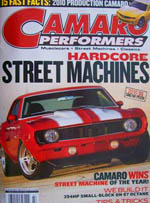 |
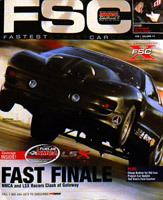 |
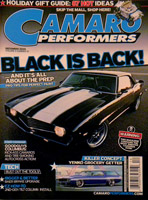 |
|
|
|
|
|
|
|
|
|
|
|
|
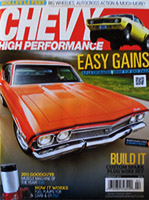 |
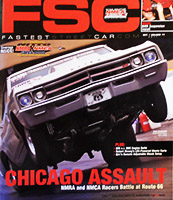 |
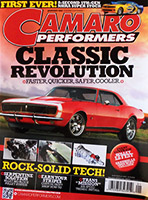 |
|
|
|
|
|
|
|
|
|
|
|
|
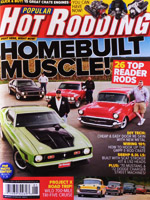 |
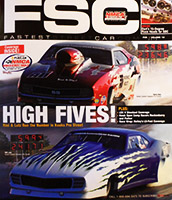 |
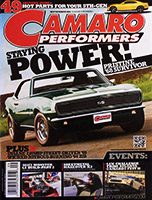 |
|
|
|
|
|
|
|
|
|
|
|
|
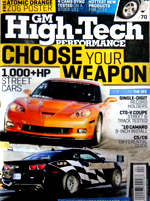 |
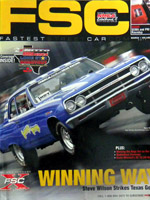 |
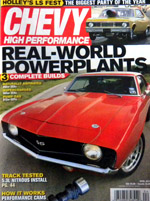 |
|
|
|
|
|
|
|
|
|
|
|
|
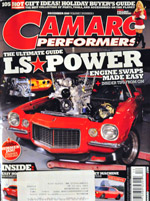 |
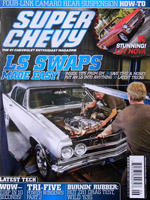 |
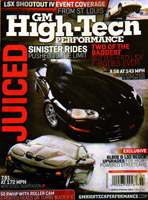 |
|
|
|
|
|
|
|
|
|
|
|
|
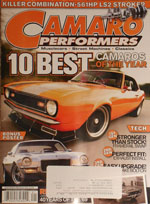 |
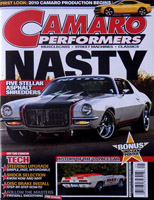 |
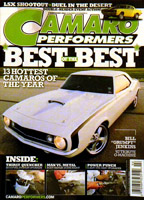 |
|
|
|
|
|
|
|
|
|
|
|
|
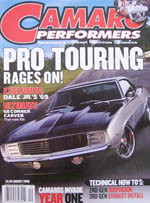 |
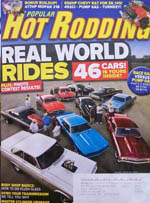 |
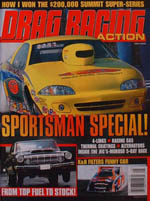 |
|
|
|
|
|
|
|
|
|
|
|
|
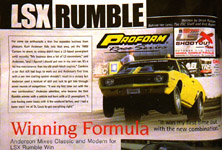 |
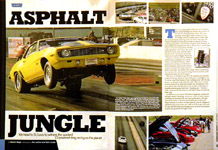 |
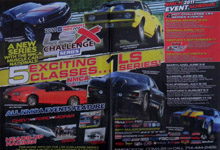 |
|
|
|
|
|
|
|
|
|
|
|
|
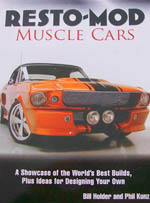 |
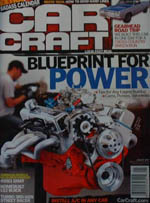 |
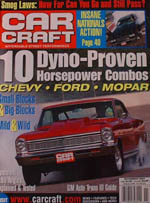 |
|
|
|
|
|
|
|
|
|
|
|
|
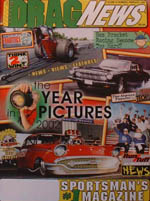 |
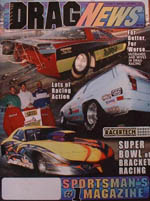 |
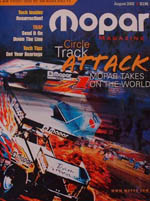 |
| |
|
|
| |
|
|
| |
|
|
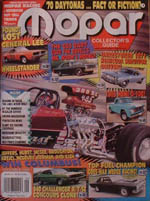 |
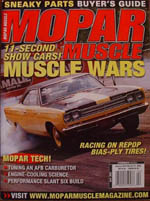 |
|
| |
|
|
| |
|
|
| |
|
|
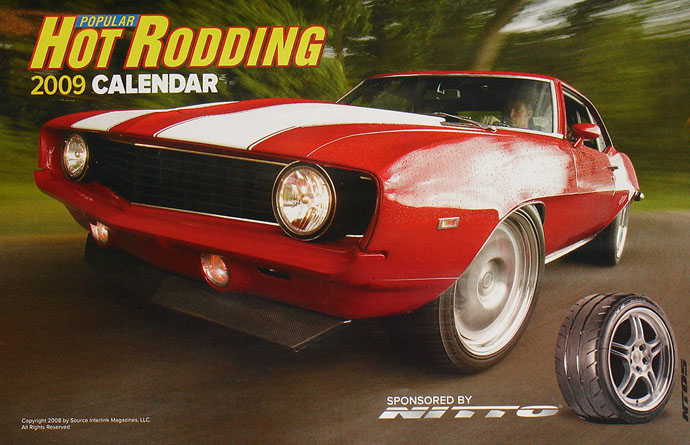 |
|
|
|
|
|
|
|
|
|
|
|
|
|
|
|
|
|
1969 Chevrolet Camaro LS7 -
Laterally Motivated
Combine Classic Style With Cutting-Edge Tech And
You Get Scott Gulbranson's '69 LS7-Powered
Camaro
By Steven Rupp
Photography by Steven Rupp, Robert McGaffin
Click here to see all the
build shots of Scott's car
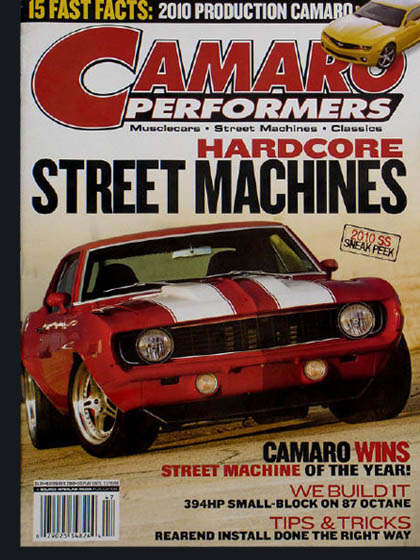 Cool
cars aren’t built in a vacuum, they’re crafted
from dozens of experiences and are a combination
of unique ideas. Scott Gulbranson’s ’69 Camaro
is just such a car. His ride is the product of
his own experiences and, in turn, his car helped
produce a very unique website: lateral-g.net.
Scott informs us, “I started lateral-g as a
place to host pictures of my car and a few
friends’ rides. I never intended to build a
website that’s as big as it is, but it just took
off. Over the time that it took to build the
latest incarnation of my car, I also focused on
making the website the best it could be. Cool
cars aren’t built in a vacuum, they’re crafted
from dozens of experiences and are a combination
of unique ideas. Scott Gulbranson’s ’69 Camaro
is just such a car. His ride is the product of
his own experiences and, in turn, his car helped
produce a very unique website: lateral-g.net.
Scott informs us, “I started lateral-g as a
place to host pictures of my car and a few
friends’ rides. I never intended to build a
website that’s as big as it is, but it just took
off. Over the time that it took to build the
latest incarnation of my car, I also focused on
making the website the best it could be.
I’ve always enjoyed technology and computers,
along with cars and motorsports, so it’s
something that brings all my interests into one
place.” With Scott’s love of tech it’s no wonder
he went the direction he did when building his
Camaro. It’s a conglomeration of high-tech
wonders and classic muscle car styling. And,
like all cool rides, the journey to getting it
on the road was almost as fun as the finished
product… almost.
Scott picked up his Camaro in the summer of ‘00.
It was an older restoration that had gotten
fresh NOS quarters and a decent paint job ten
years prior. Back then, there was no rust on the
car, but there was no performance, either. As
Scott mentions, “It was your typical 13-second
muscle car that was just plain boring to drive.”
Scott has a hard time leaving stuff alone, so it
wasn’t long before the M20 was out and a Tremec
TKO 5-speed was in. While there, he bolted on a
set of Baer brakes and some 17-inch Budniks to
replace the 15-inch steel ralleys. Those
modifications helped, but by the fall of ’04
Scott was craving more… Much more.
To chronicle the build-up of his ’69, he started
a website to post pictures called lateral-g.net.
Over the period of a few years the site became
something more than a picture hosting deal for
Scott and his buddies. Today it’s a gearhead
community nearly 8,000-strong and they all love
lateral acceleration as much as the linear type.
As he was launching the website his Camaro went
from a driver to a pile of parts as he began
building his unique vision of Camaro nirvana.
The first think he purchased for the car was
wheels. “I mounted up the tires, cut out the
inner wheel tubs, and notched the frame to get
them to clear. Once the 18x12-inch HRE wheels
would fit, I made a fixture to mock up a rear
end for the car based on where I wanted the
wheels to go. Using those measurements, I had
Currie Enterprises build a rearend for me. I
closed out the rear tubs with a DSE mini-tub
kit,” recalled Scott. Later, he decided to run
DSE’s new Quadra-Link rear suspension kit.
Unfortunately, the rearend he had built back
before the Quadra-Link even existed needed to be
modified. “Since I already had the complete
rearend built with the axle housing ends welded
on, I had to cut all the Quadra-Link brackets in
half, position them on the rearend in a fixture
I made, then weld it all together,” deadpanned
Scott.
The thing about building a car over such a long
period of time is how much technology, and
companies’ change. The LS7 that now powers
Scott’s Camaro was barely on the drawing boards
at GM, and the company that built his front
subframe, Wayne Due, is no longer in business.
Luckily for Scott, all the parts mated to the
subframe, like the DSE control arms, AGR rack,
Koni coilovers, ATS spindles, and Speedway
Engineering splined sway bar are from solvent
companies, so replacement parts are readily
available.
The chassis was given more rigidity by way of
DSE’s in-floor subframe connectors and a
six-point cage fabricated by Autokraft Race Cars
and Restorations in Eau Claire, Wisconsin. For
stopping power, Scott turned to The General for
their C6 Z06 brakes consisting of 14-inch rotors
and 6-piston binders up front and 13.5-inch
rotors and 4-piston units in the rear. Helping
mate these new-school stoppers to his rearend is
an adapter kit from KORE3 Industries. For extra
braking capability, he also grafted in a
Hydratech Braking Hydroboost system. After all,
what’s the fun of stopping if it doesn’t
occasionally detach your retinas?
Originally, Scott’s plan called for a twin-turbo
small-block, but fate had something else in
store. “When I was at Mark Stielow’s house a
while back, we took his ’69, called Camaro X,
out for a spin. While he was flogging it, Mark
told me that he had two LS7s and one was for
sale. So I jumped on it. The motor that’s in my
car is the one that Mark used for pictures in
his LS7 swap article for Hot Rod magazine,”
recalled Scott. The output of the LS7 was
ratcheted up with a Katech camshaft and a set of
Kook’s 1 7/8-inch stainless headers. To dress
out the aluminum mill Scott went with a
black-anodized front-drive system from Synister
Products. AutoKraft mounts hold it all in place.
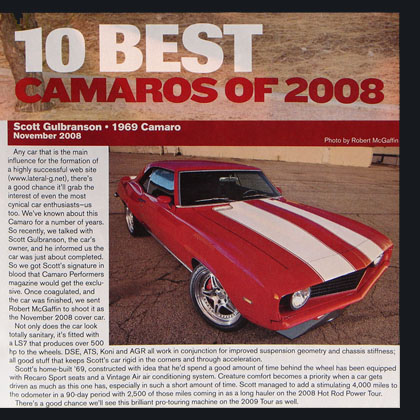 Thanks
to some fittings from Street and Performance and
a Peterson 8-quart oil tank Scott was also able
to retain the factory dry sump system. Cooling
it all is a Ron Davis radiator fitted with dual
Spal fans. Feeding the big-inch small-block is
an Aeromotive regulator and a Walboro fuel pump
fitted into the Rick’s Hot Rod Shop stainless
gas tank. Control of the engine is taken care of
by a GM E38 computer and the wiring harness was
custom built by Speartech Fuel Injection. Thanks
to some fittings from Street and Performance and
a Peterson 8-quart oil tank Scott was also able
to retain the factory dry sump system. Cooling
it all is a Ron Davis radiator fitted with dual
Spal fans. Feeding the big-inch small-block is
an Aeromotive regulator and a Walboro fuel pump
fitted into the Rick’s Hot Rod Shop stainless
gas tank. Control of the engine is taken care of
by a GM E38 computer and the wiring harness was
custom built by Speartech Fuel Injection.
On the chassis dyno it churned out over 500
rear-wheel horsepower and 470-pounds of torque.
It’s enough grunt to hold Scott over until he
installs the Nitrous Express MAF nitrous system.
Good thing he has those brakes!
Rounding out the driveline is a Rockland
Standard T56 six-speed with ATS hydraulics and
tubular crossmember. The clutch is the same
piece found in a C6 Z06, and power spins back to
a Currie nine-inch rear via a three-inch
aluminum driveshaft from Inland Empire
Driveline. But Scott isn’t done messing with the
mechanics of the Camaro just yet. “My latest
item of interest for the car is incorporating
cruise control. With the use of the stock GM E38
ECM, that uses throttle by wire, and the T56 VSS,
a lot of it is already in place,” explained
Scott.
Once he had finished the driveline and
suspension, it was back over to Autocraft Race
Cars and Restorations, where Kurt Anderson and
Paul Nowak took care of some much needed
sheetmetal TLC. Scott recalled, “While the car
was solid, it was still in need of some work. So
Kurt and Paul gave it a good shot of media
blasting, then addressed the minor gap fitment
issues. The hood is carbon fiber, and since they
have a lot of racecar experience they knew just
how to prep it. We couldn’t decide on which
shade of red to go with, so Anderson came up
with a custom PPG number that I think works
great with the white stripes.” The exterior
isn’t heavily modified, but Scott did dress it
up with a few billet items from Marquez Design.
Scott wanted the interior to stay classic
Camaro, only with a modern vibe. A DSE dash
filled with Auto Meter gauges helps Scott track
the car’s vitals, while a Budnik GT steering
wheel enables him to maneuver the ’69 through
the curves. The sleek Marquez Design door panels
and MODO innovation pedals provide style while
comfort comes by way of the Recaro Sport seats.
Leather abounds courtesy of TEA’s Designs, and
atmospheric comfort is regulated by a Vintage
Air system.
But Scott’s Camaro isn’t a wallflower; it’s a
driver. “As of right now, I’ve put over 4,000
miles on it in the last 90 days, 2,500 miles of
which were from doing the Long Haul on the Power
Tour. I’m getting 22mpg on everyday type
driving. Not bad for a car making 500 rear wheel
hp,” quipped Scott. And he can take pride in the
fact that he did 99-percent of the work himself
in his two-car garage.
The result is a car that is far more than the
sum of its parts, and Scott couldn’t be more
thrilled. As he told us, “Now that it’s finished
I get questioned a lot about what I would do
different if I had to do it all over again. And
you know what? I wouldn’t change a thing. The
final product is everything I wanted it to be.
It drives like a brand-new car; it’s been
incredibly reliable, and it’s a hell of a lot of
fun.” And with a ride like this, how can a blast
down the road, especially when it gets curvy,
not be fun?
|
|
|
|
|
|
1970 Buick GSX - A
Revolution
Car Craft Magazine Feature
The Sweet Blend Of Technology And '70s Musclecar
Image Is What Led Todd Miller On His Buick Quest.
By Jeff Smith
photographer: Wes Allison
Click here to see all the
build shots of Todd's GSX
Buick is the brand famous for its portholes that has
kept Todd Miller in this obscure corner of the
musclecar marketplace. Over all those years, Todd
felt like something was missing. He tried a Camaro
and even a Mustang along the way, but that same
nagging feeling remained.
The salient day occurred after a car show Todd
attended with his good friend Kurt Anderson, who
owns AutoKraft Race Cars & Restorations. On the way
home, Todd got a chance to drive an AutoKraft-built
LS1-powered '69 Camaro. Todd couldn't get over the
tasty blend of modern technology and the classic
lines of that first-generation Camaro. That was when
he first considered combining the words handling and
Buick in the same sentence.
Since good ideas are often found abandoned in the
dust of procrastination, the buildup began
immediately. Todd had the common sense to look for a
car in the warmer climates away from his Wisconsin
home, and the Internet made the search for a low-key
Buick easier. Soon, there was a '70 Skylark sitting
in AutoKraft's shop, stripped bare, beginning a
process that would take only 11 months to complete.
Todd played with the notion of having a '70 GSX 455.
But owning one of these rare beasts would preclude
the enjoyment of open-road adventures laced with
tire-smoking, wide-open-throttle runs. That's not
the usual fare for rare 30-plus-year-old musclecar
survivors. Todd's plan involved building a Buick
that could pass the cursory visual test for a GSX
but one he could have fun behind the wheel with. It
would perform closer to a Corvette than your
grandmother's plastic-wrapped couch.
AutoKraft began with the chassis, blasting and
powdercoating the stock frame and tickling the front
suspension with virtually the entire Global West
catalog, including QA1 coilover shocks that allow
the luxury of fine-tuning the front ride height with
a few simple twists of the spanner wrench. Wilwood
disc brakes on all four corners added to the
functionality, but it still wasn't enough.
Conceptually, there was still something missing.
The problem with a Buick Pro Touring car is that a
true-blue Buick would be powered by a torquey yet
bulky big-block. Todd's previous Buick was a '70 GS
Stage I car with Stage II pieces that was the
classic sleeper running 10.30s at 130. "That was a
great car 'cause I could beat other guys with slicks
and open headers in a car I drove to the track. It
was great because it was so stock looking. But it
was only good for one thing: going fast in a
straight line." In a move threatened by the spectre
of scorn by Buick traditionalists, Todd chose a
smaller yet powerful and high-tech 6.0L LS2 with a
few improvements. "I'm somewhat of a purist," Todd
says. "And I was a little concerned as to what the
die-hard Buick guys would think of an LS2 under the
hood. But I also figured being a Buick guy shouldn't
keep me from the Pro Touring craze. I think they
would have frowned on me more if I would have
[given] up on the Buicks and built something else."
The promise of Gen IV small-block power netted a
desire for great performance with a much more
refined engine package. That led to the LS2-based,
366ci, all-aluminum engine. The guys at Wheel to
Wheel Powertrain in the Detroit suburb of Madison
Heights, Michigan, worked their magic, eventually
squeezing more than 500 hp out of this Gen IV motor.
That's as close to the actual horsepower number as
Todd was willing to admit. "There are a bunch of
guys around this area in Wisconsin who stay up at
night trying to figure out how much horsepower we
make, and I'd just as soon keep them guessing."
We'll give you a hint-it's a lot more than 500.
The LS2 swap went even easier when AutoKraft added
its custom aluminum oil pan swap that works in
conjunction with the billet motor-mount kit for both
GM A- and F-body musclecars. With the motor firmly
in place, AutoKraft worked with Hooker Headers and
got the very first set of LS1 Hooker A-body
engine-swap headers that look like they belong on
this car. This made the entire LS2 swap almost pain
free. Todd then added the 4L60E automatic overdrive
with the plan that both the engine and the trans
would be controlled by the same Big Stuff 3
computer. This integrates control of the entire
powertrain in one box.
In classic car crafter style, Kurt, Todd, and the
rest of the AutoKraft gang finished the car just
before the Car Craft Summer Nationals in St. Paul.
"We didn't even have two miles on it when we showed
up at the Nationals," Todd says. Of course, the CC
staff (both of us!) jumped on the car immediately,
and the rest is photographic history. It's clear
that Todd long ago drank freely of the musclecar
nectar to become a Buick true believer. So much so
that he's turned his fervor into an Internet
business, as the owner of diecastmusclecars.com,
where you can find a plethora of 11/418-scale cars
of all descriptions. If you want even more
information on his GSX along with a ream of buildup
photos, you can find them on the Web site.
If nothing else, Todd's GSX retrofit forward is on
the leading edge of a wave of Gen III and Gen IV
engine swaps that is about to engulf the performance
scene. As the Doobie Brothers once put it, "What
were once vices are now habits." What's in your
engine compartment?
The Buick GSX tag in 1970 was an appearance package
with stripes, a hood tach, bigger tires, and
spoilers in either Apollo White or Saturn Yellow.
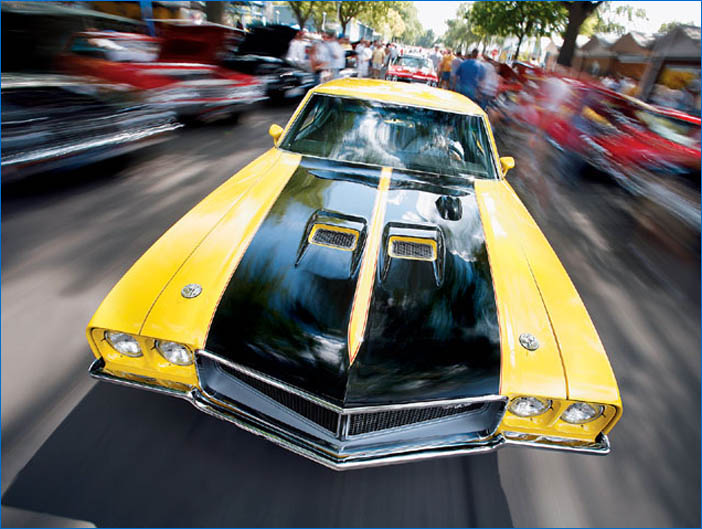
Tech Notes.
What: '70 Buick GSX
Owner: Todd Miller
Hometown: Eau Claire, Wisconsin, which is French for
"clear water." What, you don't remember that from
high school French?
Engine: This is the centerpiece of Todd's effort,
with a complete yet far from stock LS2 engine.
Production LS2s are 6.0L displacing 366 inches. This
402ci all-aluminum version was built by Wheel to
Wheel Powertrain in Madison Heights, Michigan, and
starts with a Callies forged 4340 steel
4.00-inch-stroke crank along with 6.125-inch-long
Callies forged rods connected to a set of Mahle
4-inch-bore forged pistons. Rather than use stock
heads, W2W went with a set of ported 225cc Dart
heads to increase airflow with the 2.05/1.60-inch
valves. Matching the airflow potential is a HiTech
Motorsport hydraulic roller camshaft. Controlling
the fuel and spark is a Big Stuff 3 EFI computer.
Finishing this gem off is a set of Hooker headers
leading to a Torque Technologies 3-inch cross-pipe
system employing Flowmaster mufflers. Integrating
all these high-tech electronics into a solid
performing package comes by way of HiTech Motorsport
in Anoka, Minnesota.
Transmission: In keeping with the high-tech theme,
Todd added an Automatic Transmission Design-built
4L60E four-speed automatic along with a Performance
Torque Converters 9.5-inch converter with a
3,600-rpm stall speed to give the launch that extra
push. It's all controlled by a stock Buick shifter
converted to the four-speed pattern.
Rearend: A new Moser 12-bolt takes the place of the
10-bolt stocker fitted with a set of 3.73 gears, an
Auburn limited slip, and Moser axles.
Suspension: This is one area where Todd's Buick
really shines. The frame-off resto gave Todd plenty
of room to work on adding the complete Global West
front-suspension package, including tubular upper
and lower control arms and the Global QA1 coilover-shock
conversion. Combined with a quick-ratio steering box
and a larger 111/48-inch Global West front antiroll
bar, everything was powdercoated, including the
frame. In the rear, Edelbrock adjustable upper arms
complement a pair of SpeedTech lower control arms,
QA1 shocks, and Global West springs.
Brakes: Since the brakes are one of the few items
that play into both good impressions and solid
performance, Todd went with a complete set of Wilwood discs front and rear. Actuating all this is
an AutoKraft-installed hydraulic boost kit for power
brakes that pulls pressure from the power-steering
pump.
Wheels/Tires: Here's where the Buick revels in its
dual personality. At first glance, the wheels appear
to be a set of stock steel Buick GSX Rally wheels,
but upon closer inspection, you discover
17x911/42-inch front and rear Wheel Vintiques Todd
obtained as the first set from Newstalgia mounted
with 245/45R17 BFGs up front and a sticky pair of
275/40R17 Mickey Thompson ET Drag Radials in back.
Body: The rust-resisted original body went through a
complete frame-off blasting and massage on its way
to AutoKraft's paint booth where the crew laid down
the original tint for the GSX Saturn Yellow and
black stripes. Todd nixed any custom body mods in
favor of retaining the Buick GSX visual cues.
Interior: Again, Todd wanted the initial impression
to be one of a simple, restored musclecar, including
a factory GSX steering wheel. But he did make a
couple of distinctions, including a Vintage Air heat
and A/C system and DynaMat sound deadening. The
Buick also features power windows because all Buicks
should have them.
Crew: Kurt Anderson and Paul Nowak of AutoKraft Race
Cars & Restorations (autokraft.org) can take all the
credit for this blend of old Buick and new. |
|
|
|
|
|
|
|
|


































 Cool
cars aren’t built in a vacuum, they’re crafted
from dozens of experiences and are a combination
of unique ideas. Scott Gulbranson’s ’69 Camaro
is just such a car. His ride is the product of
his own experiences and, in turn, his car helped
produce a very unique website: lateral-g.net.
Scott informs us, “I started lateral-g as a
place to host pictures of my car and a few
friends’ rides. I never intended to build a
website that’s as big as it is, but it just took
off. Over the time that it took to build the
latest incarnation of my car, I also focused on
making the website the best it could be.
Cool
cars aren’t built in a vacuum, they’re crafted
from dozens of experiences and are a combination
of unique ideas. Scott Gulbranson’s ’69 Camaro
is just such a car. His ride is the product of
his own experiences and, in turn, his car helped
produce a very unique website: lateral-g.net.
Scott informs us, “I started lateral-g as a
place to host pictures of my car and a few
friends’ rides. I never intended to build a
website that’s as big as it is, but it just took
off. Over the time that it took to build the
latest incarnation of my car, I also focused on
making the website the best it could be.  Thanks
to some fittings from Street and Performance and
a Peterson 8-quart oil tank Scott was also able
to retain the factory dry sump system. Cooling
it all is a Ron Davis radiator fitted with dual
Spal fans. Feeding the big-inch small-block is
an Aeromotive regulator and a Walboro fuel pump
fitted into the Rick’s Hot Rod Shop stainless
gas tank. Control of the engine is taken care of
by a GM E38 computer and the wiring harness was
custom built by Speartech Fuel Injection.
Thanks
to some fittings from Street and Performance and
a Peterson 8-quart oil tank Scott was also able
to retain the factory dry sump system. Cooling
it all is a Ron Davis radiator fitted with dual
Spal fans. Feeding the big-inch small-block is
an Aeromotive regulator and a Walboro fuel pump
fitted into the Rick’s Hot Rod Shop stainless
gas tank. Control of the engine is taken care of
by a GM E38 computer and the wiring harness was
custom built by Speartech Fuel Injection. 